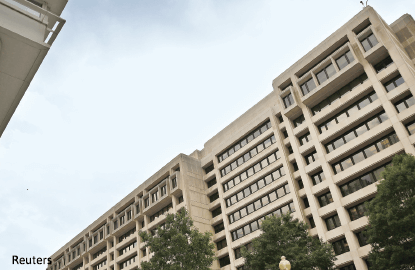
This article first appeared in The Edge Financial Daily, on March 1, 2016.
FINANCE ministers and central bank governors of the Group of 20 major economies ended their meeting in Shanghai last weekend with the usual promises to bolster the global economy. They resolved to take all appropriate measures (and no inappropriate ones).
It’s a familiar incantation. What’s needed is some action to match these endlessly repeated words.
The world economy is frail, and investors everywhere are nervous. The United States is doing relatively well — but only because the prospects are so poor elsewhere.
Much of the European Union is stagnant. Japan’s recovery is faltering. Fears of a worsening slowdown in China haven’t abated. Many emerging-market economies are reeling from the fall in commodity prices. Growth in the volume of world trade is sluggish. In January, the International Monetary Fund (IMF) again cut its projections for growth in world output to 3.4% this year and 3.6% next. It said another downward revision is likely soon.
Can anything be done to improve this dismal outlook? Indeed it can. Two kinds of policy are needed: one to support demand and the other to boost potential supply.
On the supply side, the difficulty is more political than economic. Governments ought to stimulate competition by cutting excessive regulation, especially of labour markets, and by renewing their efforts to lower barriers to trade and migration.
Trade agreements, such as the Trans-Pacific Partnership and the Trans-Atlantic Trade and Investment Partnership, should be concluded and put into effect as though the need is urgent — because the need, as tepid growth in trade proves, could hardly be more so.
There’s always resistance to such reforms, and dimming economic prospects strengthen it. This vicious circle of pessimism is apparent wherever you look, not least in the US. It’s up to governments to break it by pressing the case for growth.
Boosting demand poses a different problem. In many countries, interest rates have been cut to nothing — in some cases, to less than nothing. Central banks have also bought bonds on an enormous scale, a policy that can’t safely be expanded any more. Monetary policy can do only so much.
The answer is fiscal policy. The right kind of fiscal stimuli works on demand and supply simultaneously. Tax cuts and investment in infrastructure raise spending and expand productive potential at the same time.
In some countries, to be sure, any such increase in public borrowings would be imprudent because it would raise doubts about the sustainability of public debt. This is not the case in the US (nor in Germany, though its government said otherwise). Other countries also have fiscal space for tax cuts and new public investment, and the cost of borrowing is currently so low that the policy is bargain-priced.
Even in countries that are fiscally strong, this requires careful planning to avoid harming the long-term fiscal outlook. Done right, though, it’s the best option for expanding demand. Fiscal stimuli — plus reforms to foster competition, enterprise and employment — can revive the flagging world economy.
Most governments know this. After every international meeting they say it — then pass the buck to their central banks. In 2016, they need to take action. — Bloomberg View